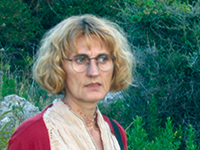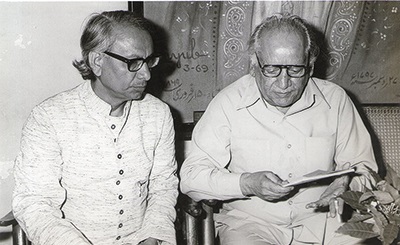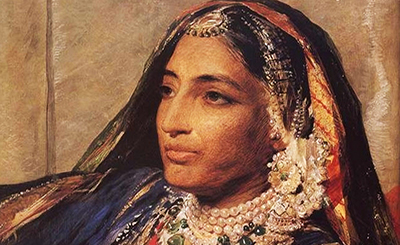Trench Gardens
During the Great War the soldiers obediently descended
into the bowels of the earth as if they were kindred spirits of
the dead Chinese emperors. Near Ypres, the city in Flanders,
they fought for four years in order to push the demarcation
line a little farther up, up to the point when the trenches
and fields were filled with corpses, while the soil became utterly
toxic. Several million were never to return home. Those
whose trench feet were not rotting, whose heads were not yet
distraught by shell shock, desperately attempted to escape
the earthly depression. The British were reading pages of
black humour, the French were reading letters from their fiancées,
the Austro-Hungarian soldiers were listening to their
storytellers and tambura players while the Germans tried to
grow plants in their trenches, well preserved to this day. As
Geert Maak recounts, some German soldiers managed to
plant gardens with rhododendrons, lilies and “Parole-Uhren”,
the small windmills that shortened the tedium, reminding
them of a more peaceful life before the war. This type of
bio matter, anti-war poetry, conservative and sentimental,
remained buried in the ditches of the lesser history. The
former trenches and war cemeteries were soon overgrown
with fields of poppies, these companions of the gunpowder
dust and soon-to-occur social revolutions. It is hard to say
whether these ditch gardens were simply the expression of
escapism or a traumatic injury, a type of apocalyptic anxiety
or perhaps a belief in some sophisticated horticulture
of a new world. In the testimony of Maak, the fields around
Ypres, polluted and barren, have remained untilled and un-
inhabited. In the meantime, the Netherlands has become
the world’s greatest producer of flowers, plants for both the
house and the cemetery, while Belgium remains the country
with the greatest number of well-maintained military cemeteries
per capita.
Sleepwalkers in Galicia
The Europeans hastened into the night of World War One like
sleepwalkers — attentive and near-sighted, haunted by dreams, yet
blind to the reality of the horror they were about to bring into the
world, writes Christopher Clark. Mesmerized by his own metaphor,
the historian did not commune with Heraclitus, Marx,
Dix or Chagall, but rather with the well-to-do characters of
Thomas Mann who, from the Lido in Venice and his Alpine
lodgings, bravely walked into the officers’ battle trenches accompanied
with a gramophone and caviar. While to Heraclitus
the Many are sleepwalkers while a few, who are philosophers, seek
after wisdom and respond to its voice; to Marx the political visionaries
are such proud yet ghastly figures which threaten the bourgeois
dream of the lifetime annuity. Yet no one before Moishe
Zakharovich represented the sleepwalking of share croppers
and wage earners in full colour of their (past and future) collective
misfortune. His Galician lunatics fly straight into the skies,
on the wings of the red angel, turning their backs to a shtetl, to a
fiancée, to farm animals, to the dew-covered fields, to the persecutions
and pogroms, to Dix’s crippled soldiers with gas masks
on their faces. Maybe this explains why in many languages of
Galicia there are more words for lunatics than sleepwalkers, the
multitude of dreamers carrying a painted bird in their hands.
From the rush after the raw oil resources in “Austrian Siberia”
to the death factory of Oswiecim, this mythical border has expanded
the concept of the exploitation and the infernal beyond
its limits. Even today it lives from its lunar choreography, the
diabolical tourism and the phantasm about how easy it is to
march into the promise of the European Dream.
The Camphorwood Binder
The book that Walter Benjamin, in his Berlin flat full of books,
could not, despite his promise, give to Asja Lacis was a rarity.
Her hand intuitively and theatrically reached for the fragrant
camphorwood binder. This was the first edition of Stelés, from
1912, a collection of prose poems by Victor Segalen. Already
by the 1930’s it had become a precious book artifact — with its
concert in a bindings held together by boards and ribbons. Only
a few readers at that time could have appreciated Segalen’s poetry,
in which he had expressed his fascination with Chinese
culture and poetry. Even fewer could have read the Chinese
script accompanying each of the poems. Because of the way it
was produced with the use of fine Korean paper and the camphorwood
bindings, the book became a treasured collectors’
item. Meanwhile, Asja persisted in offering money to Benjamin
until he, visibly agitated, as if parting with a living thing, finally
agreed to sell the book to her. At that time his ailing, love-struck
son had already passed away, while Asja’s daughter had been
released from an orphanage in Moscow. She witnessed the
book transaction and talked of it quite often in front of the TV
cameras.
Kafka’s Restaurant
Writing the cookbook Kafka’s Soup, one of the many culinary
parodies of literary classics, the author Mark Crick might not
have dreamt that Kafka toyed for a while with the idea of moving
to Palestine and opening a restaurant. A sharp-witted person,
Kafka confided this idea only to his close associates, most
of them Zionists. At the same time he let them know what he
thought of the idea of a classless, desert, Jewish community. He
knew that the vibrant Prague intellectuals would perhaps not be
pleased by the cultural offerings of a kibbutz, that in their new
(ancient) homeland they would need a place to meet and exchange
ideas. Perhaps a cool diner in which to meet and have
fun, just like characters in a Woody Allen film. A place in which,
thanks to postmodernism, the well-lettered filmmaker and the ill-fated
Israeli restaurant owner could exchange their favorite jokes.
And thus prevent Max Brod from committing the folly of violating
his friend’s bequest and handing over the manuscripts into
the hands of an unreliable mistress and secretary. By opening the
first chain of literary diners, with the logo showing A Hunger Artist,
the treasury of the state of Israel would have benefited most.
It could have taxed the globally recognisable slow food company
and it might have grown richer from the lawsuit against Ruth and
Eve, the two daughters of Brod’s entrepreneurial secretary, since
both claimed that the manuscripts of Kafka and Max Brod were
not common cultural assets, but only guaranteed the material security
of their late mother and, of course, their own. The lawyers
wisely claim that it has become an instance of the paradigmatic
Kafkaian trial of the 21st century, to be emulated by the greedy
inheritors of famous writers in many other countries.
The Leftist Dowry
When she married Otokar Keršovani1, Ana (Nana) Šilović
received a typewriter as a wedding gift from her uncle, the
Croatian politician and ban, Josip Šilović2. In her youth this
Paris-trained ballerina became a communist, dedicating herself
to working for the Communist party. Having relinquished
her theatrical career and comfortable bourgeois existence she
risked her life by spending it hiding from the constant threat
of police raids and imprisonment. She chose the wedding gift
herself and used it to type the seminal pages of the history
of the Zagreb communist movement. During one of those
police raids the typewriter was impounded. The family asked
ban to intervene and recover the confiscated wedding gift but
he resolutely replied: ‘Let the law be obeyed!’.The blind force
of the law once again intervened in the family history when
Nana’s daughter, Ines Martinović, born in the USSR at the
end of 1945, unaware that her mother had fallen victim to
Stalin’s purges, wrote to her grandparents: Mamusha has gone
on a party assignment.
1. Otokar Keršovani (1902-1941) was a notable Croatian and Yugoslav journalist and left-wing politician. He was one of the first victims of the Ustashe regime’s retaliation for Partisan activities.
2. Josip Šilović (1858-1939) was a Croatian jurist and university professor who served as rector of the University of Zagreb, member of the Croatian Parliament and the first Ban of Sava Banovina from 1929 to 1931. In the 20th century, Croatian Ban was a chief government official in Croatia, effectively the first prime minister of Croatia.
Zofka’s Horse
Throughout her life, Zofka Kveder6 was haunted by the image
of the tram-pulling horses collapsing from overwork on the
streets of Trieste, Prague and Zagreb. For her, it was a metaphor
of the suffering of women, restrained by the binds and
chains of the patriarchal family (“working like a tram horse”).
Often she felt like a beast of burden, exhausted and burnt out,
taking care of three small daughters, chasing after slim honoraria
for her journalistic and literary efforts. Not only did the
dimmed gaze of the tram horse reflect their own anguish and
submission, but also a dying era conflicting with the new age of
speed and mechanical progress. More than by scarcity, the exhausted
women were backed into corners, rented closet rooms
and factory halls, oppressed by the political unconscious of
capitalist moderna. At night it bore into them, pushing some
to jump in front of trams: ‘Our women, when unhappy, throw
themselves under trams, our widows jump through the windows
and are dying of a tiny, dirty, useless death. Has God not granted
us a single Judith?’, writes Zofka in her Almanac of Yugoslav
Women in 1921. The news of Nietzsche’s nervous breakdown
and his embrace with the Turin horse only encouraged her,
years before the Hungarian filmmaker Béla Tarr, to look at the
world being eroded by the catastrophe through the eyes of a
metropolitan draw-horse, while the women who died on the
rails watched it even closer.
6. The early 20th century Slovene-born, Yugoslavian and Croatian feminist and writer.
Images from the Corner
The street vendor on Ferhadija7 vehemently reacts at the film
crew of Jasmila Žbanić’s documentary Images from the Corner.
He does not wait for someone to explain these are local
filmmakers; he deftly turns the framed canvases on his stall so
that they can’t be filmed by their intrusive cameras. In the city
strafed with the flashes of countless photo and TV cameras, as
often as by shells, in the city where the curse ‘May your house
be seen on the CNN!’ has been invented — the citizens fear the
repetitive images of their destiny. Better to say, they are fed up
with digital archives filling up with the scenes of their traumas,
their screams and all other types of human misery. The street
vendor is a skilled merchant; an intermediary of the higher
spheres blending the art of persuasion with the ethics of social
responsibility. As an art dealer in the poverty-stricken world, he
protects human dignity, spirituality and the customers’ right
to enjoy clichéd sentimental images he sells. When the need
arises, he puts down the canvas on the ground, refusing to be
shamed by the ironic eyebrows of the idle flâneur. Still,
this vendor is not the corner photographer of Jasmila Žbanić’s
documentary. If the professional in question uses two rolls of
film to shoot the hard-wounded young woman without helping
her, the people on Ferhadija do not need another lesson
in remote, televised humanitarianism. Their well-documented
urban hell seems spacious enough for everyone — and what
might be problematic — it is a path paved with good intentions
of the theory-mongers of hyperreality.
7. The popular walking street in the historical centre of Sarajevo.
As a young professor of sociology and philosophy, Claude Levi-
Strauss arrived at the University of Sao Paulo with his wife
Dina. Being ethnologist and anthropologist she was interested
in the fieldwork among the Amazon indigenous peoples. After
the couple planned and completed several expeditions together
into the depths of the Brazilian savannah and rainforest, they
organised an exhibition of the ethnographic artifacts collected
during the Mato Grosso expedition entitled Mission Claude et
Dina Lévi-Strauss in Paris in 1937. However, all traces of Dina’s
research and writings go missing from the history of contemporary
anthropology while her husband becomes the writer of
Tristes Tropiques (1955) — the seminal postcolonial, self-critical,
autoethnographic piece of writing; a melancholic, visionary,
insightful book in which the creeds and lives of several indigenous
peoples of the Amazon were studied with understanding
and responsibility, with empathy and deep insightfulness
into the closeness of all life phenomena. In Tristes Tropiques
Levi-Strauss, however, mentions his wife only twice. Firstly, as
a side remark that at the Franco-American dinner neither my
colleagues nor myself — nor our wives who accompanied us — had
any inkling of the involuntary role we were to play in the evolution
of Brazilian society. And secondly, he noted that his wife, who
had taken part in all early expeditions exploring the material
culture, picked up a dangerous gonococcal eye infection from
Nambikwara people and became so gravely ill that they had to
evacuate her. But by persistently ignoring the professional, collaborative,
and emotional role of his spouse, the famed guru of
modern structuralist humanism only confirmed the idea of an
thropology’s “second sex” or the asymmetrical gender relations
of power and knowledge confirmed by canonical texts. Still, in
one of the most famous field photos from Brazil we see Claude
and Dina seated and relaxing between two hammocks in a tent
and nibbling corn on the cob. The following observation from
Lévi-Strauss, that may depict beautifully the previous homely
scene, brings out the emotional closeness and interdependence
among the Nambikwara men and women considered by neighbouring
communities as “the most primitive” of all nomadic
groups: (…) their embraces are those of couples possessed by a
longing for a lost oneness; their caresses are in no way disturbed
by the footfall of a stranger. In one and all there may be glimpsed
a great sweetness of nature, a profound nonchalance, …something
that can be recognized as one of the most moving and authentic
manifestation of human tenderness.
Absolute Comrades
For bourgeois Europe the spectre of Bolshevism once wore a
short skirt and was holding a book in one hand and a cigarette
in the other. The first female students faced suspicion and
opprobrium, often even open acts of enmity and banishment,
because their contemporaries recognised in their knowledge
and independence the great enemies of the “natural” female
role in the family and reproduction chain. Nothing could have
more clearly represented the depth of the transformation of the
existing society, championed by Marxists, anarchists and feminists,
than a woman teaching or holding a megaphone. The high-school
student, Marie Sklodowska, experienced a nervous breakdown
when she could not enroll at the University of Warsaw
during the Great War. Mileva Marić for the reason that the
University of Zurich had rejected her dissertation, yet was later
quoted by her husband, Albert Einstein. Virginia Woolf, nee
Stephen, suffered until the end of her life because Cambridge
remained closed for her.
In tsarist Russia, short-haired female students were considered
nihilists and grave defilers, while in Sarajevo, “all middle school
female students were corrupt”, as witnessed by Crnjanski. In
western capitals, headstrong female intellectuals were desirable
patients for the newly opened psychiatry clinics. One of
them was Bertha Pappenheim, who is remembered today as one
of the best known cases of female hysteria and one of the pioneers
of Austrian feminism, without whom there would have
been no psychoanalysis. In the Balkans, the progressive female
youths were profiled by police and even imprisoned long before
they would gain their voting rights. A psychiatry ward always
remained a possibility for women offenders. Resisting the patriarchal
authority for centuries they perfected certain methods
of conspiratorial activity, of mimicry and of persistently
breaking through toward their desired goals. Left-wingers have
particularly appreciated educated women from better families,
especially those who spoke foreign languages, could type or use
shorthand. These versatile, dedicated women often imposed
themselves as irreplaceable “absolute comrades” — as the social
democrats of Russia called their member, the journalist Elena
Stasova. Besides the Agitprop, note-taking, transcribing and
coding, the illegal female workers also mastered the technique
of writing using invisible ink. Through clandestine correspondence
with their leaders who lived abroad, or underground, or
who were imprisoned, these “absolute comrades” have left us
with a valuable testimony of their life’s path and political careers.
Their own “underground adventures” and merits, however,
have often remained invisible and buried in the deeper
layers of history. Several prominent women were memorised
through leftist anecdotes and there exist group photos, but
even these still did not guarantee them a lasting place in social
memory, state archives, or school textbooks. Nonetheless, from
these “blank” leaflets one just needs to place them over a flame
and they shall start speaking eloquently again, threatening with
some new global conflagration.
Loquats
For the first time ever, I savoured loquats in Dubrovnik, during
a fervent feminist discussion on the subject of the self-effacing
women of the community, the victims of unwritten
norms, religious upbringing, husbands, parents and children,
their principles and inner inhibitions, that is, the women to
whom this libertine city of Dubrovnik proves no libertine at
all. Listening to the life story of the woman who brought us
the freshly picked loquats, a prisoner of her husband’s family
and of the security of her children, I recalled that both Žižek
and Salecl had written on the egotism of women who sacrifice
themselves for the sake of others. With that sacrifice, the
woman desperately tries to gain what she does not have, thus
“acting out” the possession of a hidden treasure which would
make her an object worthy of love. I wanted to ask what this
“Lady of Loquats” would be actually missing. I also wanted to
ask if anyone drawn into the game of doubling partners and
fornication would be satisfied with the Lacanian formula of
sexuation as the wise way of avoiding the “theatre of hysterics”?
Would Renata Salecl, meeting the younger incarnation
of her “symbolic double”, simply use her quotation to declare
with calm that it is easy to understand such theatre where two
lovers only play predefined roles?
Instead of putting any embarrassing questions, I kept on
listening to this emotional narrator, to the slow unfolding of her
bitter life story, in which at no point lurked the chance of Lacan
jumping in as the judge of her allegedly overrated “hidden
treasure”. Indeed, the steady and forbearing love of this woman
could not be drowned by three generations — of her husband,
her children and grandchildren; her professional work did not
suffer either, nor did the departure from her husband’s house
look like the final chapter of her carefree existence.
During the narrative we slowly sipped grappa in the narrow
street of Dubrovnik, inhaling the odour of the past centuries yet
pleased with a well-organised seminar. Several loquats moved
from hand to hand; tiny fruits cannot be divided into smaller
bites. I savoured each of them slowly, warily, with a mistrustful
mouth. The size of an almond, the texture of dried citrus, the
loquat melts in one long bite, like the essence of an unknown
fruit we would have tasted long ago if we hadn’t been afraid
of the unpleasant surprise. As if, for us, the mixture of bitter
and sweet, tart and juicy, given by the Nespolo8, might open
the enigma of gender dysphoria, the secret of the capricious
plant which refuses bipolar gender identification, and mixes
eloquent euphoria with the bitter dysphoria of loquats.
8. Play with words; the Croatian original nešpula and nešpola derives from the Italian nespola, nespoli. Since nespola can be read as a compound of two Croatian words — ne (not, less) plus spol (gender, sex) — the author coins a new term, i.e. genderless plant or a plant that refuses sex classification.












